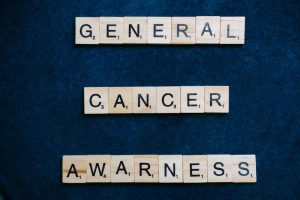In a world where convenience often trumps caution, many people unknowingly expose themselves to harmful substances lurking in everyday products. From household cleaners to personal care items, the very products we trust to keep our homes and bodies clean may be harboring risks that can impact our health. This revelation can be startling, as it forces us to confront the reality that our daily routines might be undermining our well-being.
As consumers, we tend to assume that if a product is on the shelf, it must be safe. Unfortunately, this is not always the case. Regulatory agencies often lag behind in keeping up with emerging research on toxic ingredients, leaving us vulnerable to the effects of substances that could disrupt our endocrine systems, cause allergic reactions, or even lead to long-term health issues. The excitement of modern convenience can quickly turn into concern as we dive deeper into the hidden dangers that may be just a label away.
One of the most common sources of harmful chemicals is found in household cleaners. Many popular brands contain volatile organic compounds (VOCs) that can irritate the eyes, nose, and throat, and may even contribute to respiratory issues. While these products promise to eliminate germs and dirt, they often do so at the expense of our indoor air quality. As we scrub our countertops and wipe down surfaces, we may unintentionally be inviting harmful fumes into our homes, putting ourselves and our families at risk.
Personal care products are another significant area of concern. From shampoos and lotions to deodorants and makeup, many items contain parabens, phthalates, and other synthetic chemicals that have been linked to hormonal disruptions and reproductive issues. The allure of a flawless complexion or a pleasant scent can mask the potential dangers lurking in these formulations. As awareness grows, consumers are beginning to demand transparency and safer alternatives, but the journey toward a cleaner beauty industry is still fraught with challenges.
Food packaging is yet another hidden source of health risks. Chemicals like bisphenol A (BPA) and phthalates are commonly used in plastics, and they can leach into food and beverages, posing health threats. Studies have shown a correlation between exposure to these substances and various health issues, including obesity, diabetes, and heart disease. As we reach for that convenient takeout container or drink from a plastic bottle, we might be ingesting harmful chemicals that could have long-term consequences for our health.
Despite these alarming realities, there is hope. Increasing consumer awareness and demand for safer products are driving change in the market. Many companies are reformulating their products to eliminate harmful ingredients, and new brands are emerging with a focus on transparency and sustainability. As we educate ourselves about the dangers of everyday products, we empower ourselves to make informed choices that prioritize our health and the health of our families.
In conclusion, while the hidden dangers of everyday products can evoke concern and frustration, they also present an opportunity for change. By seeking out safer alternatives and supporting brands that prioritize our well-being, we can take control of our health and reduce our exposure to harmful substances. The journey to a healthier lifestyle may require vigilance and effort, but it is a path filled with hope for a safer, cleaner future. As we navigate this landscape, let us remember that knowledge is power, and each informed choice we make can contribute to a healthier world for ourselves and generations to come.



